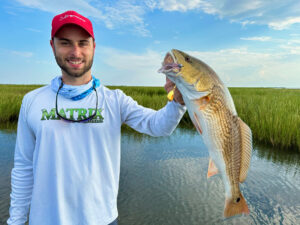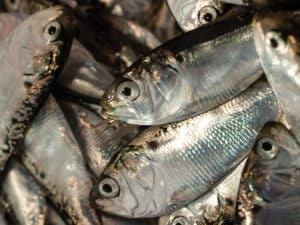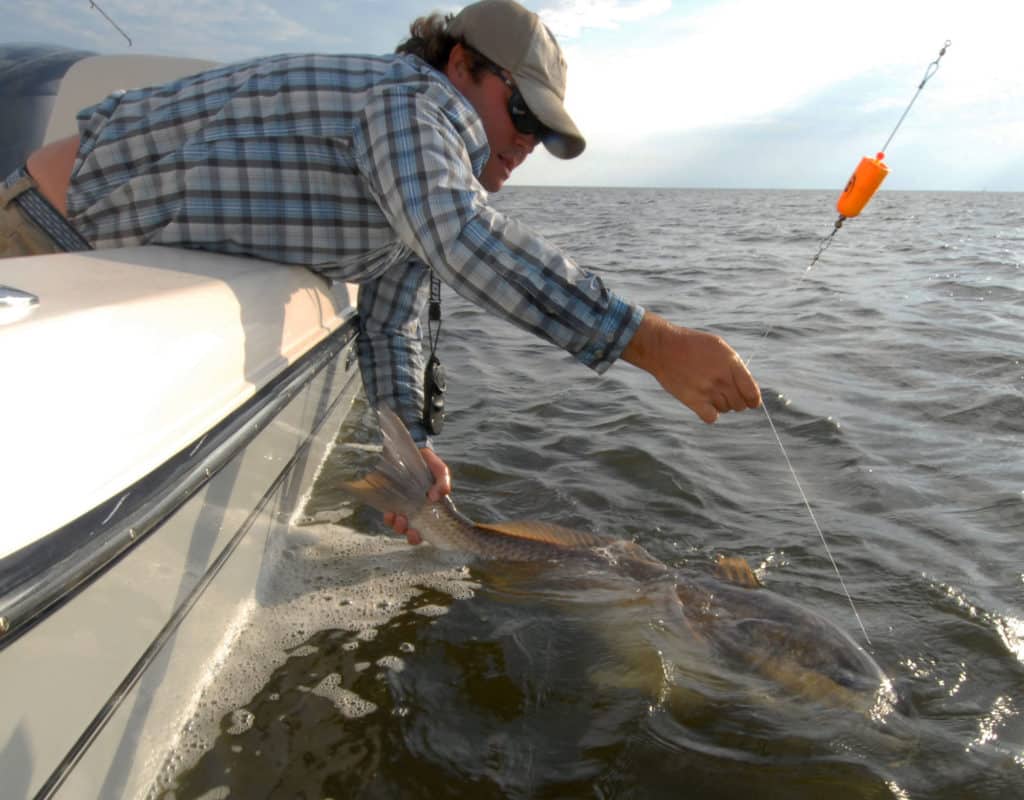
Since many saltwater gamefish—from seatrout and redfish to stripers and mackerel—feed somewhere in the water column, suspending a livey or lure between the surface and bottom can increase your odds of success. The easiest way to suspend baits involves one of angling’s oldest tools—a float attached to a fishing line.
Slip Floats
In regions where tides fluctuate frequently and greatly, anglers use a depth-adjustable slip float to keep a bait in the strike zone. Slip floats come in high-profile, pencil-shaped models like the Lindy Tackle Little Joe Pole Float and low-profile versions such as the Thill Big Fish Slider.
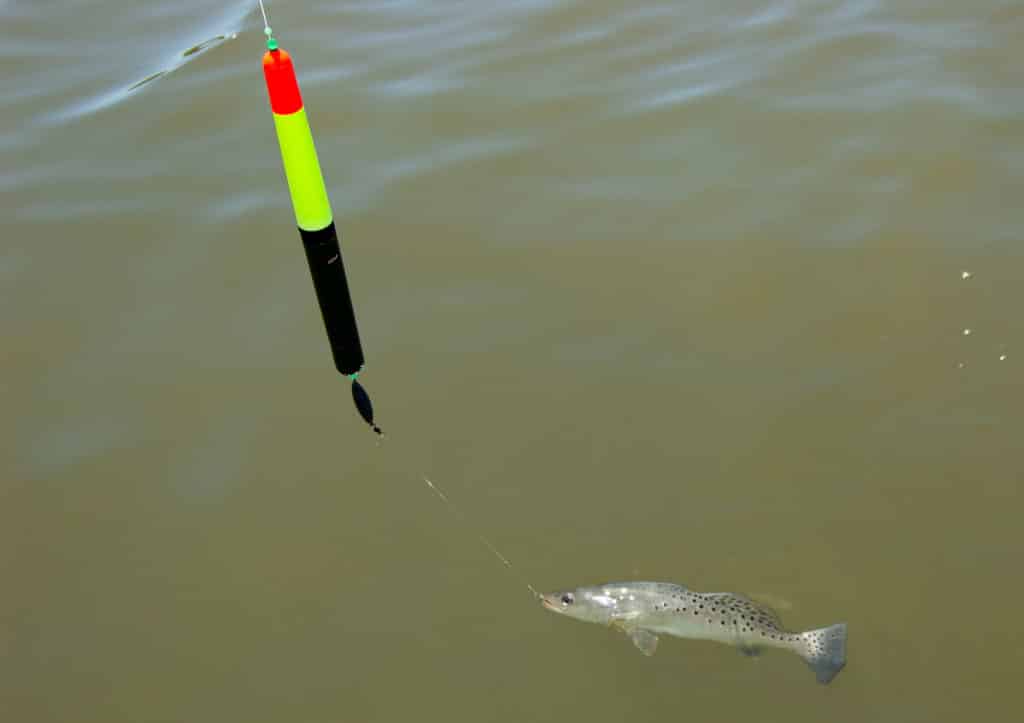
While some models come with built-in weights, I prefer the unweighted versions, which I pair with a cigar-shaped lead matched to the float’s buoyancy. Pencil-shaped models require less weight than the bulkier low-profile models. For example, an 8-inch Big Fish Slider requires 2 ¼ ounces to perform properly while an 8-inch Little Joe Pole Float works fine with 1 ¼ ounces. Choosing the proper weight boils down to trial-and-error, but assume you need to add or remove a ¼ ounce of weight for each inch of float length.
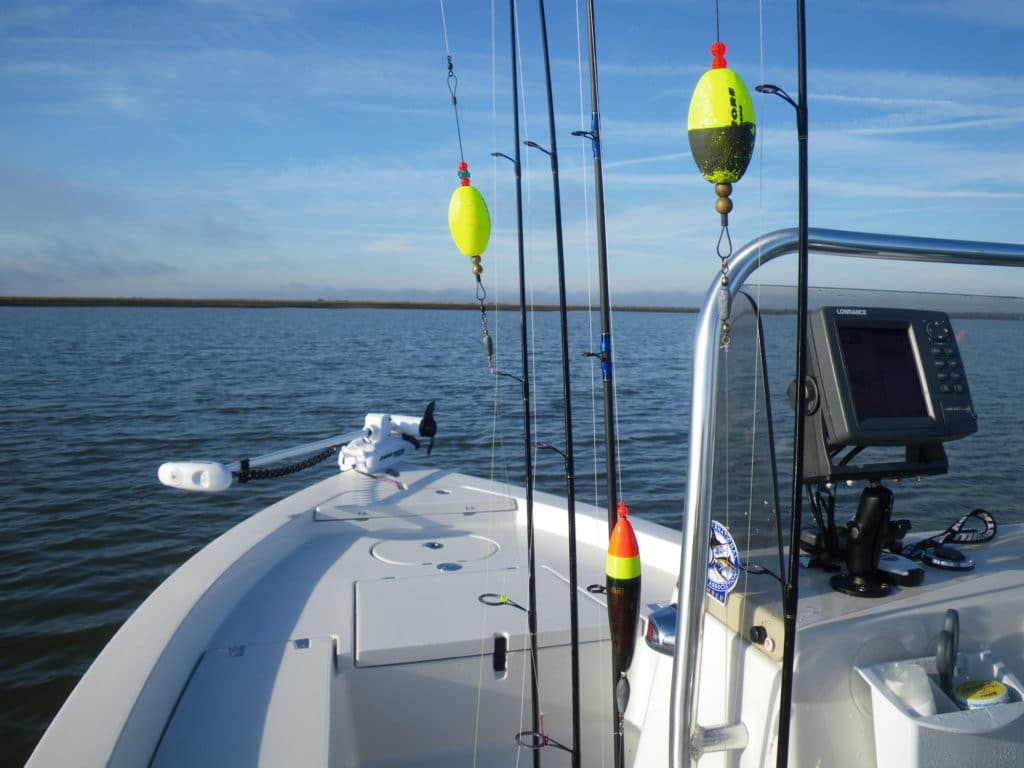
Some slip floats also come pre-packaged with rigging supplies, but for those that don’t, I keep these materials in my tackle bag:
- Pre-made stoppers, either knots or rubber bobber stoppers,
- Small plastic beads (be sure the diameter of the opening is smaller than the size of your stop knot, and that the bead is too large to fit into the opening of the float),
- A selection of cigar-shaped weights with a wire loop at one end and a barrel swivel on the other matched to the floats,
- Larger plastic beads, or short lengths of vinyl tubing, to serve as a cushion between the float and weight.
- A 14-inch length of thin-diameter wire with the last 2 inches bent back on itself for threading the main line through the float.
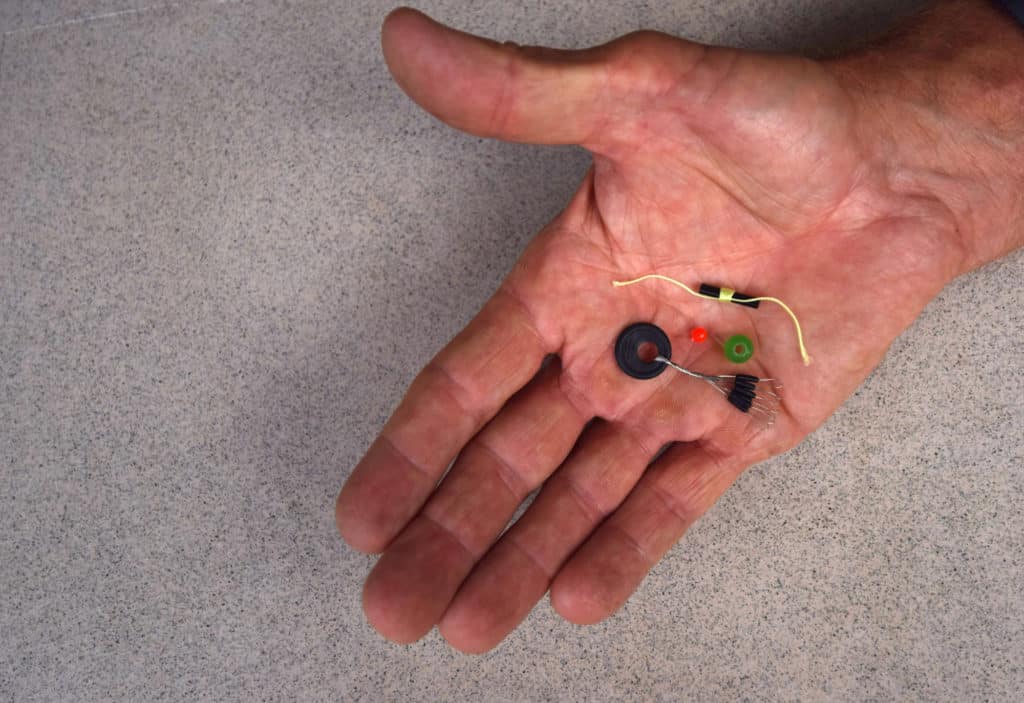
To rig a slip float, place a bobber-stopper knot or rubber bobber stopper on the main line. Both can be purchased at tackle stores or online, or you can tie your own stopper knot.
Slide a plastic bead onto the main line before threading the line through the float, starting from the top down. Pull the main line from the bottom of the float and slide it through a larger bead or piece of tubing. Tie the line to the fixed loop at the end of the cigar weight.
Attach a leader and hook appropriate for your quarry to the swivel at the bottom of the weight.
Position the stopper on the main line to set the depth of the terminal rig. I usually start with the bait a few inches off the bottom and work upward in the water column until I find the fish.
When properly rigged and presented, the brightly colored upper section of the float extends perpendicular above the waterline while the lower portion remains submerged. Slip floats can be especially effective for drifting live baits over and around fish-holding structure.
On days with a stiff wind, especially one opposite the current, fishing high-profile floats can be difficult. So I opt for a low-profile model that’s effected more by the water movement and less by wind.
If the presentation involves drifting the bait with the current, leave the reel in free spool allowing the float to move naturally. Remain vigilant to engage the reel and set the hook as soon as the float disappears.
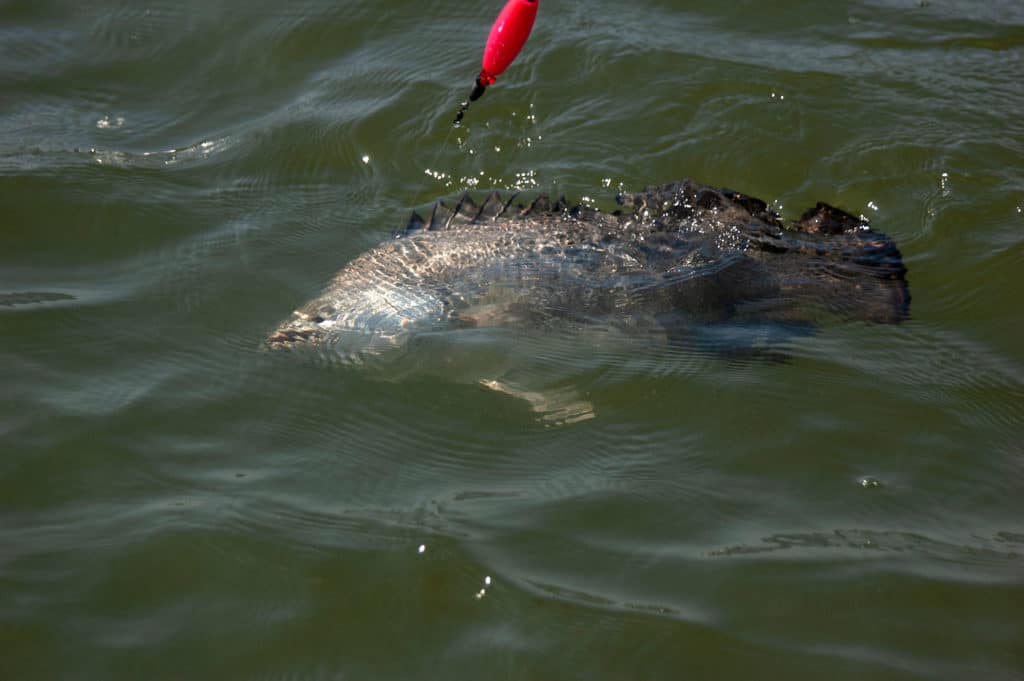
Popping Corks
Gamefish respond to a variety of stimuli with two of the most important being sound and movement. Thus, the popping cork has become an indispensable part of the modern inshore saltwater angler’s arsenal since it mimics the sound of feeding fish, imparts movement to the bait or lure suspended below and provides anglers with a visual cue of the strike.
The most popular version comprises a short length of corrosion-resistant wire threaded through plastic and/or brass beads and a cigar-, egg-, or conical-shaped foam float with a cupped face. Barrel swivels terminate both ends of the wire. Some versions are weighted to facilitate longer casts. Common brands include the Bomber Paradise Popper, Precision Tackle Cajun Thunder, and D.O.A. Clacker.
Read Next: Fishing With Popping Corks
Position the popping cork between the main line and a length of leader matched to the water depth and tipped with a hook, jig, spoon, or even a crankbait. When using a live bait, adding a spit shot or two to the leader midway between the float and the hook keeps a frisky livey in the strike zone.
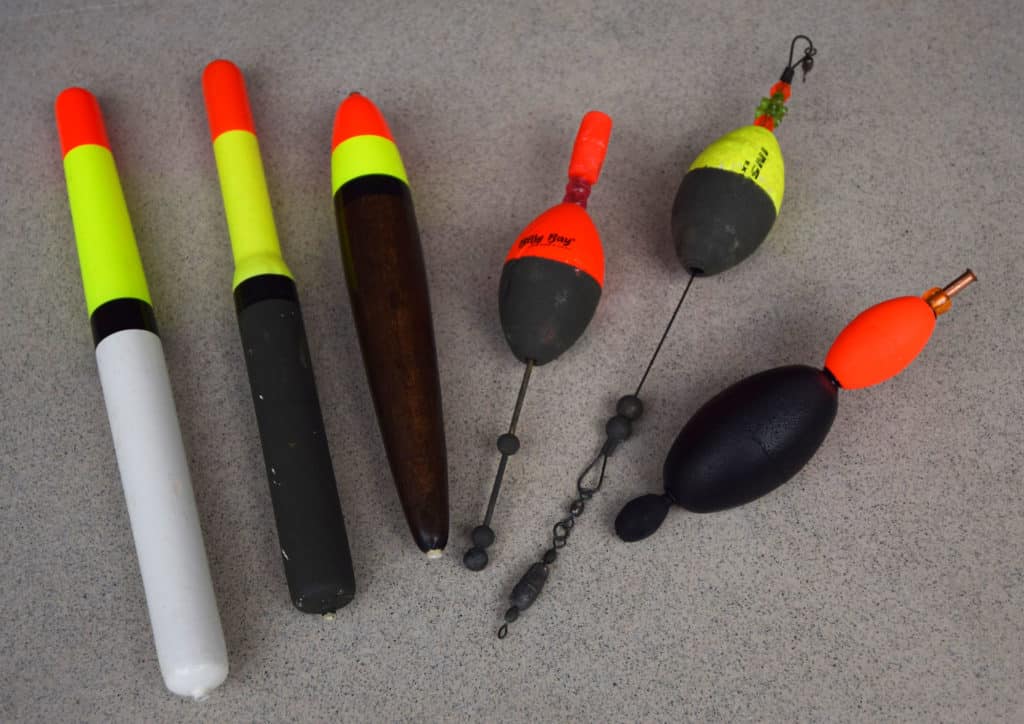
If you fish an area where the depth changes dramatically over the duration of a fishing trip, keep pre-made leaders varying in length from 2 to 6 feet stored in labeled plastic zippered bags to minimize rigging time.
I make mine with a surgeon’s loop on one end. Simply pass the loop through the open eye of the barrel swivel on the popping cork, bring the opposite end of the leader back through the loop, and pull it tight. Finish the leader as desired.
After casting the popping cork, wait a few seconds then vigorously jerk the rod tip causing the beads and float to crash together. Quickly recover any slack, pause then repeat. Often the popping cork disappears immediately, but sometimes fish hit the bait or lure a few seconds later as it descends. Change up the pace until you find the right rhythm and intensity.
The Best of Both
It might come as no surprise that ingenious anglers have figured out a way to combine the best of slip floats and popping corks. On Betts’ Billy Bay Aggravator and the Harper Super Striker, a hollow brass tube replaces the wire typically used on a popping cork. The main line threads through the tube, and then the popping cork is rigged the same as the slip float with the stopper-bead-float-bead sequence. The result being a popping cork that can be fished effectively in deeper waters.



